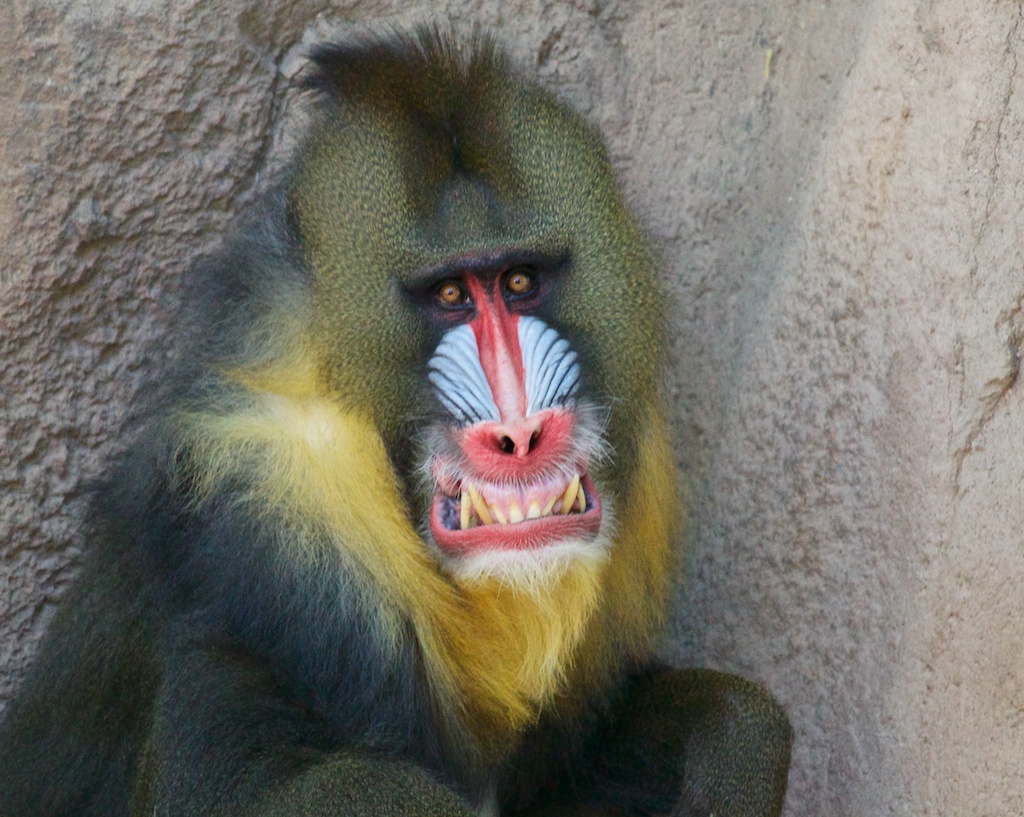We observed the
mandrill at the zoo. It is also known as the Mandrillus Sphinx. It is found in the rain forests in western Central Africa. It is currently threatened because it is hunted for bushmeat. Commercial bushmeat hunters kill mandrills. As people convert rain forests for agriculture and industry, mandrills lose their homes.
Observations:
We watched a female mandrill sit on the edge of the habitat at bite at its leg and arm. It continuously bit and scratched its legs, looking around and seemingly attempt to put one of its legs behind its neck. This went on for a minute. Then, it would run in a circle around the tree and then sit back at the same spot to do the same thing. After 5 minutes of this, the mandrill would poop, take the poop, and inspect it for bugs and then mash it with its hands and smear it on a rock. It did it twice, ran around the tree, sat on a log and pooped in her hand only to smear it again on the log. Throughout this observation, we noticed that it would fling itself vigorously (hyper-like) running around the tree in the same direction at least 5 times. It usually returned back to the same edge of the habitat after making these rounds. We believe that it was bored.

